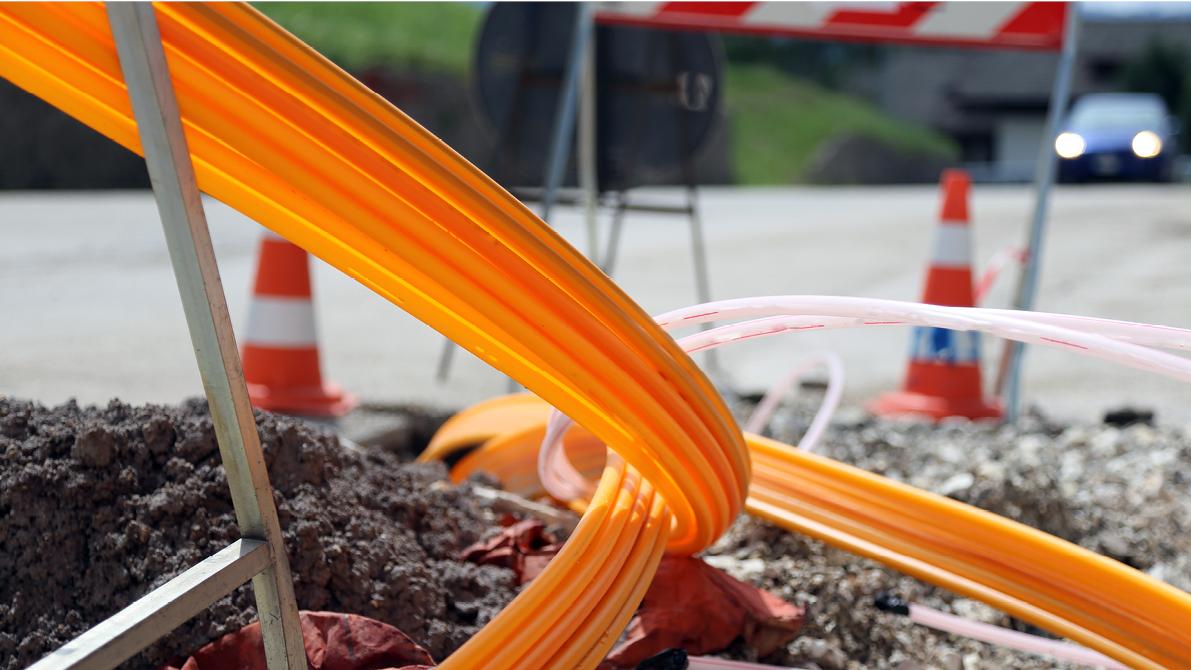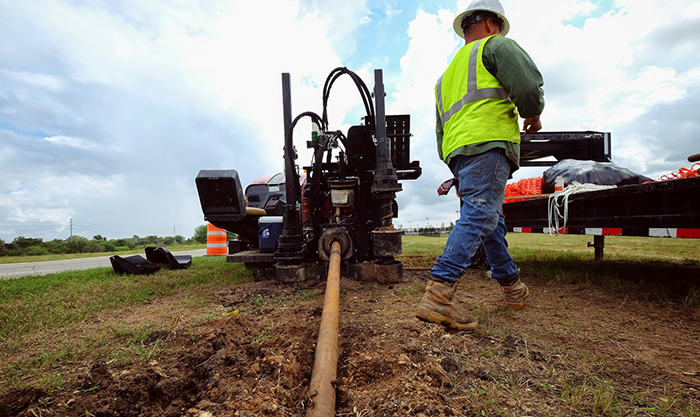What to Expect During a Dedicated Internet Access (DIA) Implementation
In this post we review the Dedicated Internet Access (DIA) implementation process in detail in order to help you understand what to expect during each step.

Jul 7, 2022
SHARE
Getting a Dedicated Internet Access (DIA) circuit installed can often be the bane of an IT leader’s existence. From order acceptance to construction to activation, there are tons of steps in the dedicated fiber install process that occur over the course of months, each of which can lead to order errors or delays if mismanaged by the carrier. At Lightyear, we’ve found that installations are the least painful when the buyer has a clear understanding of job steps involved in a normal fiber install and what to expect during each one. In this post, we will dig into the DIA install process in detail with the goal of helping you understand what to expect.
What to Look For Prior to Implementation
Before you submit a DIA order, you likely went through an RFP process where you quoted multiple vendors and made a selection based on a variety of factors. Although price is often the most important consideration, it’s worth ensuring you know what type of implementation you’ll be signing up for before you select your carrier. First and foremost, it’s worth determining whether the site you’ll be installing is on-net, near-net, or off-net for a carrier you’ll be selecting and asking about what installation interval they expect for the site. An “on-net” site indicates that little or no construction will be required, while a “near-net” site may indicate light construction and an “off-net” site may indicate significant construction potential.
More construction often means a significantly longer lead time to install completion, and although this should be factored into a carrier’s install interval estimate, construction timelines are very delay-prone and can add significant variability to a job’s completion timeline. If construction is involved, the carrier may be able to offer insight into the depth of construction needed, any permitting requirements, and other factors that can impact your delivery timeline to better ground expectations.
It is also worth noting whether or not the carrier you’ve selected is selling its own infrastructure, or reselling another carrier’s network via layer 2 access. If a carrier is selling layer 2 access, this can complicate communication and coordination around installation, as they’ll be coordinating processes between you (the end user) and the layer 1 carrier.
What Happens During Implementation?
As soon as you’ve submitted your order, it’s off to the races! Let’s just hope the race is a quick one.
Submitted orders should have a project manager (PM) assigned to manage your order through its construction timeline. Although each carrier uses different terminology for each milestone, they generally follow the same process. Ideally, you’ll receive status updates on your order from your carrier PM every 1-2 weeks, and it’s worth checking in if you don’t.

Source: Google Fiber
From submission to completion, orders can take anywhere from 30 - 360 days (or longer) to install, although most take 60 - 120 days (or less if a build isn’t needed). Some steps in the install process, with corresponding timing expectations, are outlined below.
Order submission!
The carrier will scrub your service order for any issues, confirm order validity / availability and submit to service delivery. (ETA: 1-2 weeks typically)
During this step, issues may arise with your order that could lead to early cancellation if the order hadn’t been properly vetted (more build costs than anticipated, as an example) OR your order can sit idly if a carrier forgets to process it, which can add weeks to your install timeline.
Service delivery will assign a project manager to your order and it will begin to be processed. (ETA: 1-2 weeks typically)
A site survey will be run and site requirements / construction will be established. (ETA: 2 weeks, may be done in parallel with previous steps, and may not be needed in rare cases). At this point in the process, if there are any site improvements that you need to make, this is when you’ll be advised. It’s important that you complete your requirements in a timely manner, as some service providers will place your service order on hold until the site meets their standards for installation. If you’re unsure of what’s being asked, it’s very important that you follow up with the individual that performed the site survey. Here are the things that we see the most often:
Conduit with pull string and sometimes with innerduct.
Appropriate space on a plywood backboard, relay rack, or cabinet.
Access to power outlets.
#6 AWG grounding bar available.
Construction and site requirements are to be completed. (ETA: all over the place - from 1 week to several months)
This is the longest and most delay-prone step in the entire process. Your focus and coordination during this step (providing access, fulfilling requirements, and overall communication) can significantly accelerate the timeline to completion.
During this step, the carrier will carry out any required outside plant work (OSP), inside plant work (ISP), splicing, and fiber testing.
In addition to actual construction steps, permitting process and requirements, hardware orders, customer site readiness, and building owner right of entry can significantly hold up timelines at this step.
Once construction, splicing, and fiber testing have completed, the carrier will load the configuration files into the CPE / modem that will be installed to program it with port assignment, network settings such as bandwidth speeds, auto-negotiation settings, and duplex mode. This ensures that the carrier equipment is able to connect properly with the customer’s router or firewall. Carriers will also assign static IPs at this time. Depending on the carrier, this milestone may be completed before or after the construction milestone.
Once provisioning is complete, the carrier PM will schedule a technician for dispatch to install the CPE/modem in the customer’s server rack. Once they install the equipment, they will test the circuit to ensure that traffic (data) is passing with no packet loss. After the testing completes successfully, the technician will hand the circuit over to the customer, completing the project. Carriers will begin billing the customer the same day that the install completes.
This is what carriers mean by the Firm Order Confirmation or FOC date.
What If I Run Into Issues?
Now that you have an understanding of the install process overall, you can better strategize around potential install issues. First and foremost, it’s of the utmost importance that you’re up to speed on installation updates and are not holding up any process steps yourself. If your order has not yet been formally accepted or you haven’t received a PM, it’s worth hounding your carrier to ensure your order is processed on a timely basis. Once your PM is assigned, ensure that you’re getting weekly updates, and if you’re not, ask! As updates come, ensure that you provide any necessary bits of info that could hold up a process as soon as they arrive (on-site contact information, building owner ROE, etc.).
If your order is not moving to timeline despite best efforts to stay on top of things, it’s worth pushing your PM and carrier sales rep to help you escalate your order to carrier leadership. Regarding escalations, carriers themselves have different processes and different types of customers can hold more weight in these situations (i.e. a customer billing $100k of MRC can ask for much more than a customer buying its first circuit, unfortunately).
If you’re interested in having some help by your side during the installation process to ensure that issues are escalated and milestones are proactively tracked, try evaluating Lightyear for your circuit procurement needs :).
Want to learn more about how Lightyear can help you?
Let us show you the product and discuss specifics on how it might be helpful.
Not ready to buy?
Stay up to date on our product, straight to your inbox every month.
